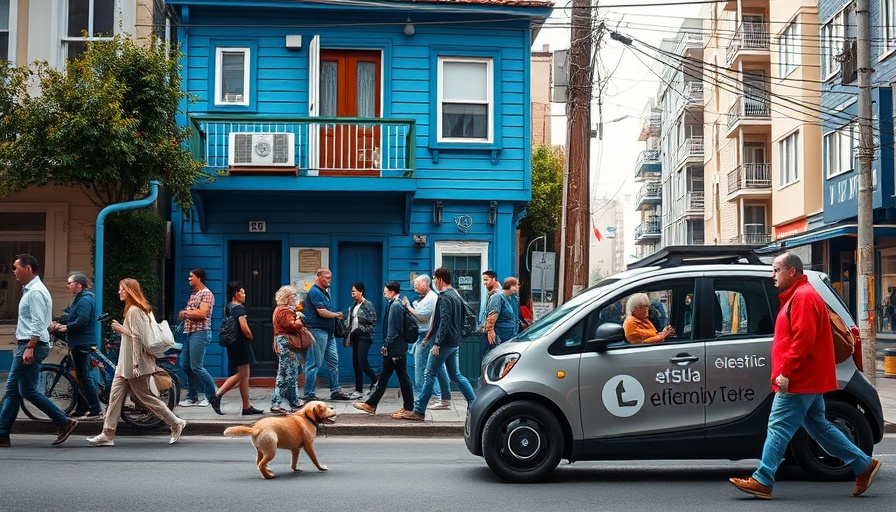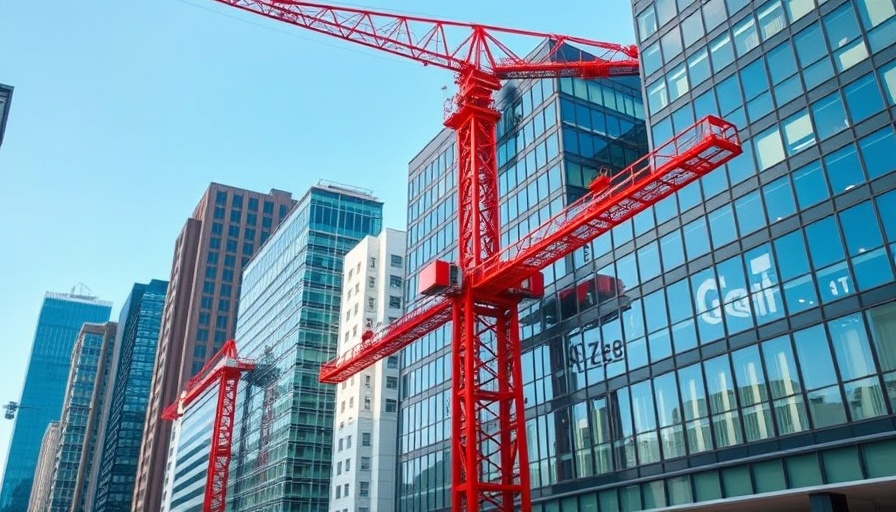
The Future of Electric Vehicle Infrastructure in San Francisco
The recent installation of new curbside electric vehicle (EV) chargers in the Duboce Triangle marks a significant step forward in San Francisco's commitment to expanding its EV infrastructure. These chargers are not just a nod to environmental responsibility; they represent a pivotal change in the city’s efforts to facilitate a shift towards greener transportation options.
Building a Pathway for Electric Vehicles
This pilot program is a response to the growing demand for practical charging solutions as electric vehicles gain popularity among consumers. With this initial rollout, San Francisco is paving the way for hundreds, if not thousands, of additional charging points in the future. Such expansion would not only encourage more residents to consider EVs as a viable alternative to traditional gasoline-powered cars but would also help in reducing the overall carbon footprint of urban transportation.
Why This Matters to Residents
For parents and families living in the Bay Area, the convenience of having public chargers within close proximity can make a significant difference. Charging an electric vehicle at home may not always be feasible, particularly for those living in multi-unit residences. The ability to charge on the street provides flexibility and accessibility, making electric vehicles a more practical choice for a wider audience. Moreover, this initiative aligns with the values of health-conscious individuals and families who aim to contribute positively to the environment.
Comparing Efforts Across the Globe
Similar initiatives are taking root worldwide, as cities like Amsterdam, London, and Berlin also expand their EV charging networks. Amsterdam boasts the most extensive network of both public and private charging stations, illustrating how comprehensive infrastructure can lead to increased EV adoption. San Francisco’s project can learn from these global success stories to optimize its own approach. Such intercity comparisons not only emphasize effective strategies but also foster a collaborative spirit in combatting climate change.
Current and Future Trends in Electric Vehicle Usage
Persistent advancements in battery technology, coupled with increasing environmental awareness, suggest that the adoption of electric vehicles will only rise in the coming years. Industry projections indicate that by 2030, EVs could account for upwards of 30% of all vehicles sold. Local governments, such as San Francisco, need to stay ahead of this trend, scaling their infrastructure accordingly.
Challenges Ahead: Countering Misconceptions
While many welcome the transition toward electric vehicles and the supporting infrastructure, myths about EV performance and charging accessibility persist. Common misconceptions include fears over battery life, charging times, and the reliability of charging stations. Educating the public about the evolving technology of EVs and addressing these concerns will be crucial as San Francisco progresses with its EV commitments.
Empowering Residents with Information
As the city moves forward, local residents can play a role in shaping this initiative. Engaging in community discussions, participating in local planning meetings, and voicing individual needs will ensure that the EV infrastructure serves everyone effectively. Residents are encouraged to stay informed through local news sources, such as San Francisco News and SF News, to contribute meaningfully to discussions regarding sustainability in their community.
Take Action: Moving Towards a Greener Future
To truly benefit from this new infrastructure, it is important for residents to advocate for sustainable practices within their neighborhoods. This means being involved in local decision-making processes and promoting EV usage among friends and family. By adopting electric vehicles, residents can contribute to a cleaner environment while enjoying the numerous benefits that come with modern electric mobility.
 Add Row
Add Row  Add
Add 




 Add Row
Add Row  Add
Add 

Write A Comment